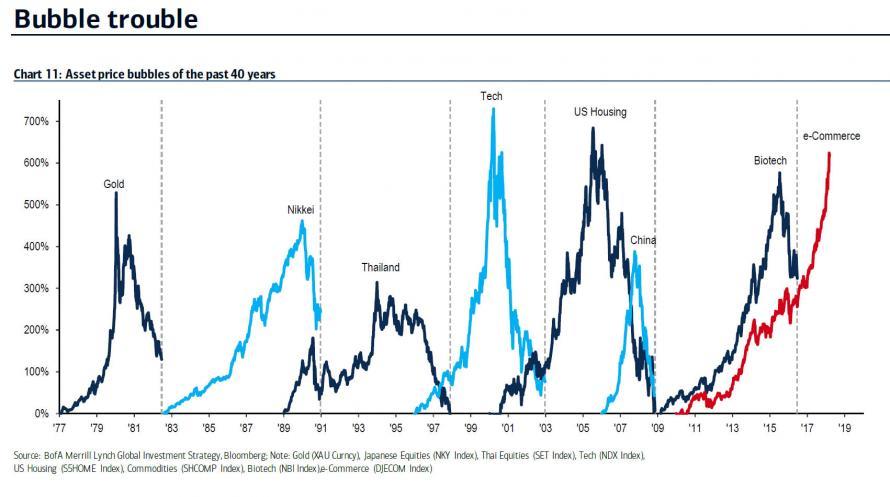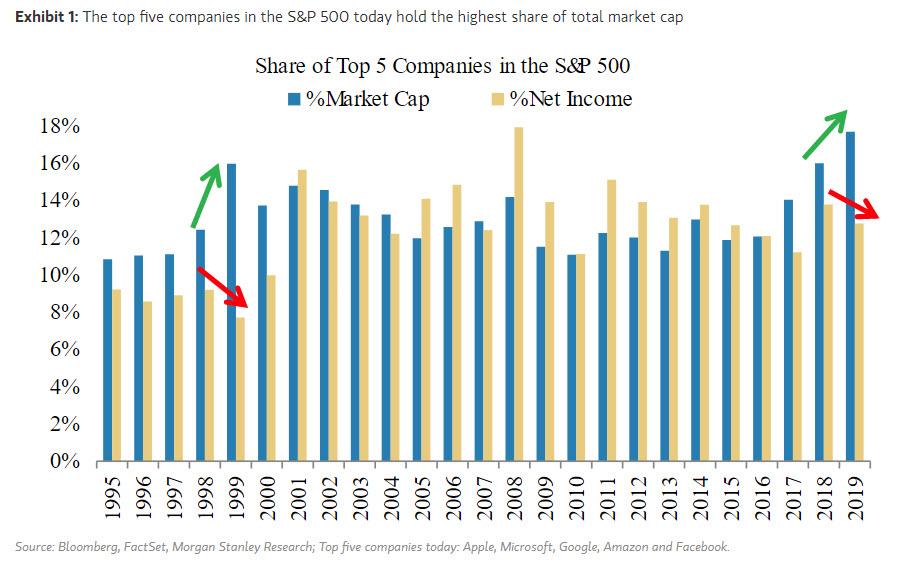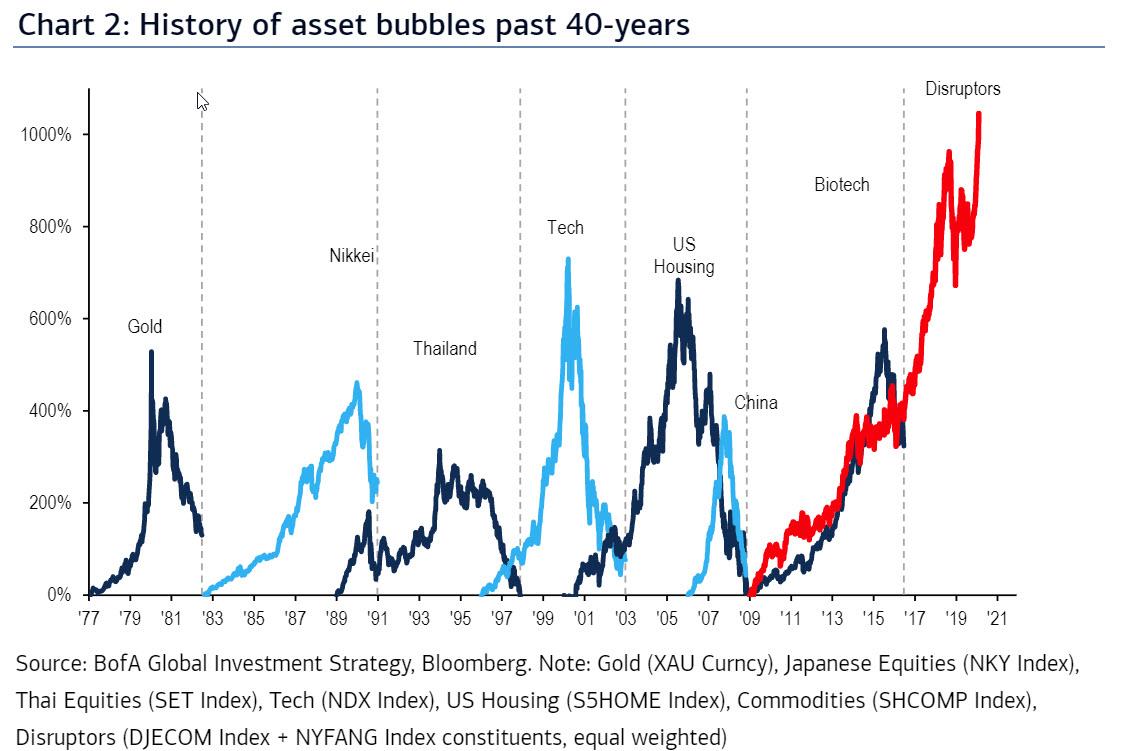BofA: We Are Witnessing The Biggest Asset Bubble Ever Created By A Central Bank
Back in March 2018, when commenting on what was then the 2nd longest central-bank induced bull market of all time (it is now the longest ever) Bank of America’s CIO Michael Hartnett pointed out that “bull market leadership has been in assets that provide scarce “growth” & scarce “yield”. Specifically, the “deflation” assets, such as bonds, credit, growth stocks (315%), have massively outperformed inflation assets, e.g., commodities, cash, banks, value stocks (249%) since QE1. At the same time, US equities (269%) have massively outperformed non-US equities (106%) since launch of QE1.”
And, as happens every time the Fed tries to manage asset prices, it had blown another bubble: commenting on the hyperinflation in risk assets, Hartnett said that the “lowest interest rates in 5,000 years have guaranteed a melt-up trade in risk assets”, which the strategist had called the Icarus Trade since late 2015, noting that the latest, “e-Commerce” bubble, which consists of AMZN, NFLX, GOOG, TWTR, EBAY, FB, is up 617% since the financial crisis, making it the 3rd largest bubble of the past 40 years.”

Fast forward two years, one failed attempt at normalizing interest rates, one QE4, and one historic P/E multiple expansion meltup later, when the same bull market leadership in “growth” assets has led to the unprecedented result that the top 5 stocks now account for a greater share of S&P500 market cap than ever before…

… and when what in 2018 was the third largest bubble of all time only has – thanks to 800 rate cuts by central banks since the Lehman bankruptcy – now been rebranded to “e-Commerce” by BofA’s Hartnett, and which as shown in the chart below has – after rising more than 1,000% from its crisis lows – become the single biggest asset bubble of all time.
